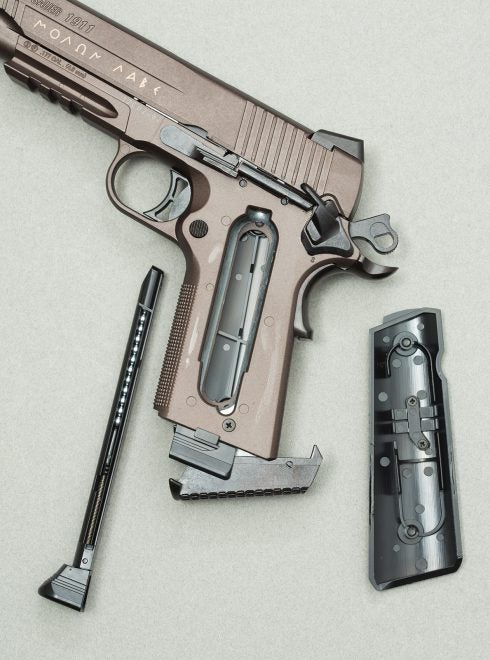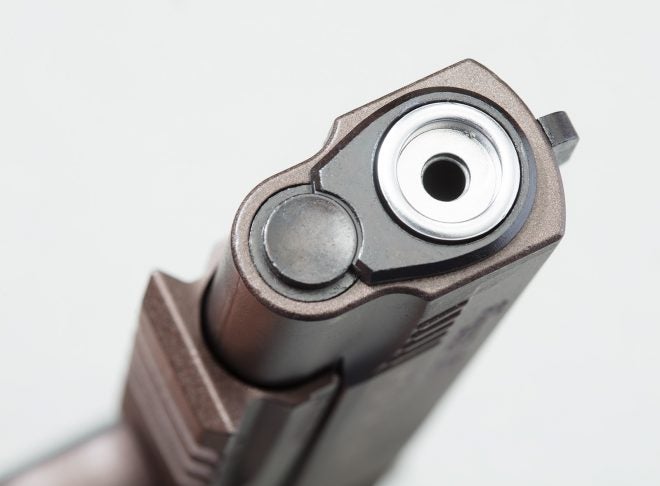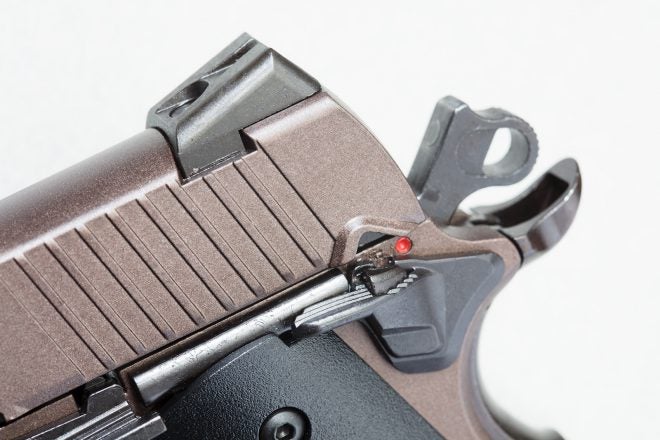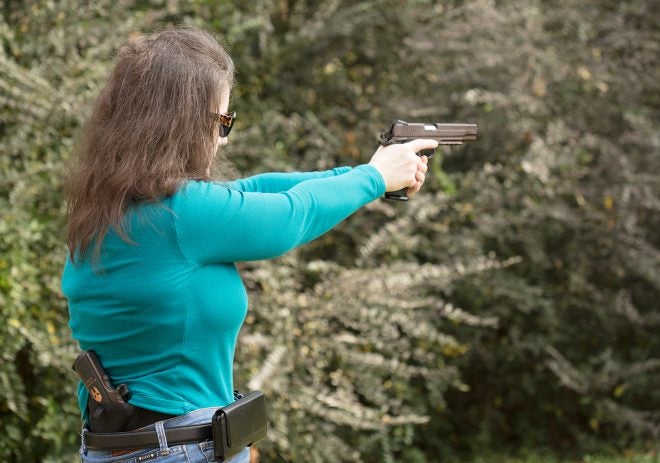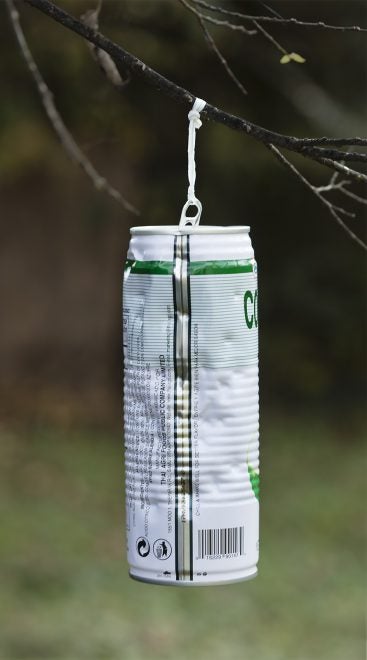SIG Spartan’s Little Brother
Oleg Volk 11.06.17

Enter a writer with a great liking for Sig Spartan .45ACP pistol. Exit perfect eyesight, with the attendant problem of focusing on the front sight. Two solutions came to mind, a laser grip and learning to point shoot. The problem with point shooting is the expense in time and ammunition, and the necessity to keep up the skill. Most public ranges in her part of Texas don’t allow point shooting from retention either.
One of these is a BB gun, the other isn’t. The differences are perceptible but slight. They feel the same to the touch and heft. The BB gun version here has a Picatinny rail, a rail-less version is also available.
The left grip panel comes off easily for loading. The CO2 powerlet fits from the top. The backstrap acts as the closing lever, slightly awkwardly. If the hand closing it slips, the entire CO2 powerlet gets wasted, but that’s a mistake a user is unlikely to make twice. Used correctly, it’s very efficient and loses none of the gas. Each magazine holds 16 steel BBs.
While the barrel is smooth, the accuracy of the spherical projectiles was surprisingly good. Report was negligible.
While the pistol is close to the original in appearance and weight, not all details match. The right side safety lever (absent on the .45) is entirely decorative and doesn’t move. The left side lever consists of a smallish button inset in the larger lever. The large lever moves only after the inset has been depressed, which isn’t an ergonomic match to the centerfire pistol. The sights are nearly identical. The trigger is single action but the weight is around 12 pounds, it feels more like TT33 trigger than like a 1911. If you can shoot accurately with it, the real trigger–even the unrefined GI variant–will be easy for you.
The proof of usefulness is in the testing. Back yard provided enough backstop for the 400fps or so BBs, and so we could train without spending twenty minutes each way to get to the range. Turns out that the absence of noise and recoil helps to concentrate on the basics: sight alignment, trigger squeeze, follow-through. The blow-back slide added to the realism, though it occasionally caused short stroking from the support hand’s high thumb friction when the CO2 level got low. Because of the blowback simulation of slide action, each powerlet was good only for five or six magazines, 80 to 96 shots. Each shot, CO2 and BB, cost around 3/4 cent. Add to that the minimal range requirements, and you can see how this becomes an attractive supplementary training method.
400fps BBs would have penetrated a regular soda can, but the heavier gauge corrugated coconut water container was too tough for them. As a result, the BBs bounced off the target but feebly. Shiny, especially with some degree of backlight, the projectiles were easily observable in flight by people standing near the shooter, permitting spotting. At ten yards, even with the target can moving slightly in the wind, all hits were on target so long as the aim was correct and the trigger pulled without a jerk. Point of impact was about two inches above point of aim at ten yards. It would be closer at half and double that range. When shooting closer, less reflective targets would be preferred, such as small cardboard boxes filled with foam or scrap paper.
Shooting BBs will teach nothing about recoil control or rapid reloading, but it’s excellent for keeping up with the basics. It points just like the real thing, and feels pretty similar too.

